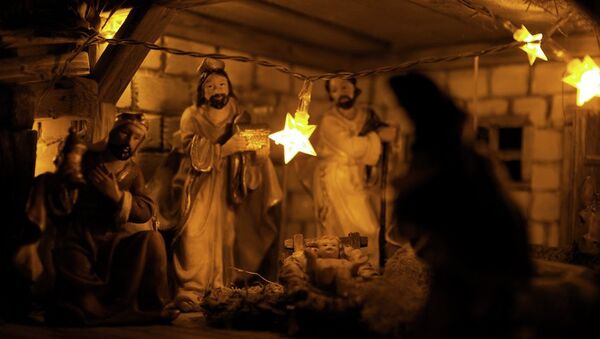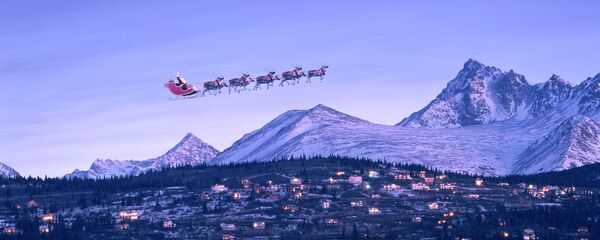The “In nativitate Domini ad missam in vigilia” mass that usually starts at midnight is renowned for its solemn nature. The priest saying Mass places the figure of the baby Jesus inside a crib.
There are a huge number of traditions associated with Christmas Eve around the world, including the gathering of family and friends, the singing of Christmas carols, the illumination and enjoyment of Christmas lights, trees, and other decorations, the wrapping or opening of gifts, and general preparation for Christmas Day. The festivities are not unique to the Roman Catholic Church, the Lutheran and Anglican Churches as well as some other Protestant denominations celebrate Christmas, and each country has its own Christmas traditions.
In some countries, believers observe a strict fast on the 24 December. For example, in Poland, Christmas Eve dinner consist of meatless dishes. A plate with consecrated unleavened bread, also known as Christmas wafers, is placed in the center of the table. Before dining, the head of the family recites a passage from Luke’s narrative of the birth of Christ. Those present then take the wafers that often depict Christmas scenes and share them with each other, wishing each other peace and wellbeing. The Christmas family meal, a tradition symbolizing Christian love, then begins.
In Lithuania and some other countries, hay is placed under the white tablecloth of the Christmas dinner table in line with a long-held tradition to remind those present of the humble circumstances of Christ’s birthplace in a stable in Bethlehem, surrounded by farm animals, and also of the Mother of God, who placed the newborn Jesus on hay in the manger.
In Spain, Christmas Eve is called Nochebuena and is usually celebrated by dining with family. It is customary to present gifts to everyone in the family. Some families recall old-time Catholic traditions and invite people who are on their own or those with little means.
In most German towns and cities, all work stops after lunch December 24. At about 10 p.m., church bells begin to ring and herald the start of Christmas services. Even those who seldom go to church throughout the year go on that day. And families eat hearty Christmas meals after church.
In Norway, many families attend church every Christmas Eve, with services starting at 3 p.m. Many people also visit the graves of their deceased relatives and lay flowers..
The people of Canada start celebrating Christmas on the evening of December 24, that is, Christmas Eve. On that evening, adults eat a Christmas Eve meal, after completing their daily chores or coming back from church. In the provinces of Newfoundland and Labrador, it is customary to sell fish caught during the seven days before Christmas at churches. All the proceeds go the parish and are spent on worthy causes. In Vancouver, hundreds of thousands of new lamps are lit at homes, on lawns, at parks and on squares every Christmas Eve. The descendants of Celtic highlanders living in villages in some parts of Nova Scotia sing old songs all night long, which by morning become psalms and hymns.
Christmas Eve is also considered a family holiday in Brazil. Generally, numerous children and grandchildren descend on the homes of their parents and wish each other a merry Christmas.
After the Christmas meal, the entire family attends Christmas Mass, which is compulsory for all Roman Catholics.



